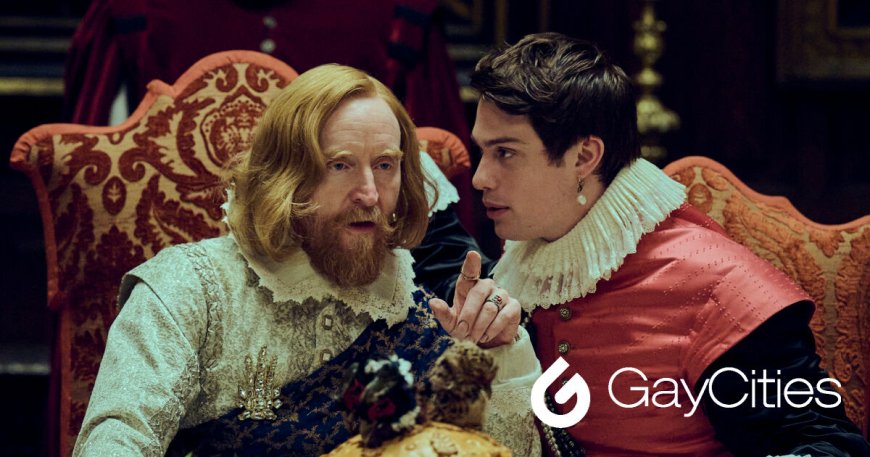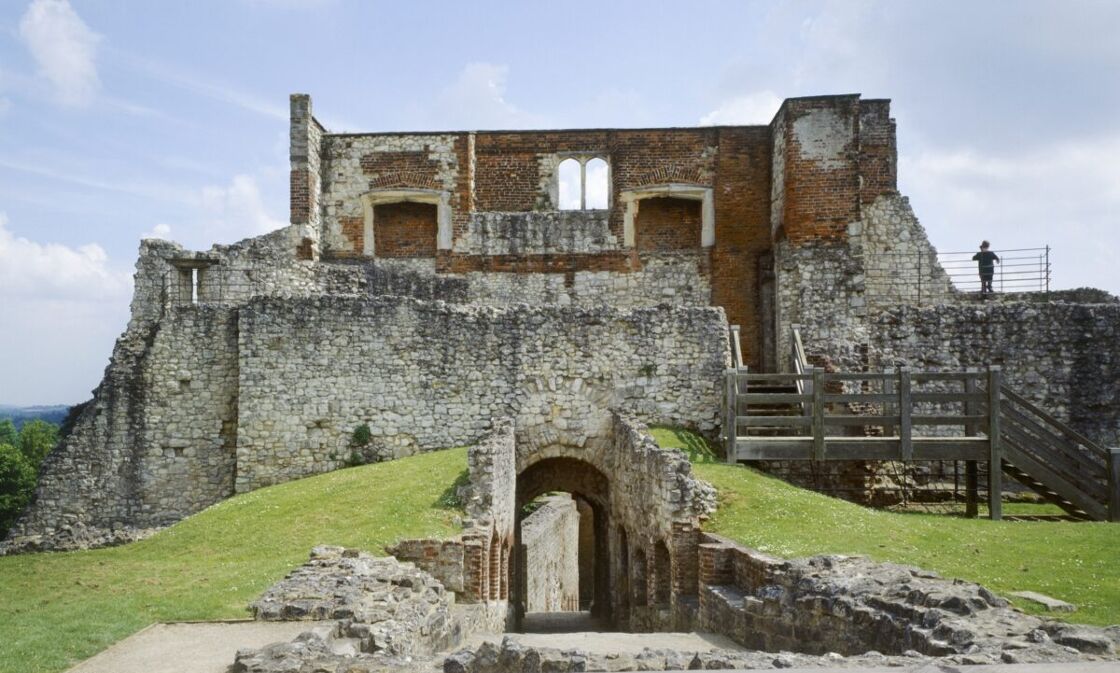Uncover a queer royal love affair at these stunning sites
If the new series "Mary and George" is getting you hot, head to England to discover where King James I and George Villiers found romance.


Starz’s stunning and steamy Mary & George series has breathed 21st-century queer life into the 17th-century royal love affair of England’s King James I and his hottie favorite George Villiers, the Duke of Buckingham. And while James is far from history’s only royal to have been what we would now consider LGBTQ+, he was, fortunately for us, one of the least discreet about his preferences. So, while historians will likely forever fight over the exact nature of the intimate relationships of some royals, there’s little doubt that James had a distinct eye for some of the hottest men in his kingdom.
Accordingly, few other queer royal love affairs are now as openly celebrated at the sites where they actually happened as the 11-year liaison of James and George. As luck would have it, several of the relationship’s key sites are also open to the public, so you can step into some of the actual places where the king and his favorite likely did more than just exchange knowing glances.
National Portrait Gallery
Start your James and George tour in London, then as now, the irresistible capital of England. At the endlessly absorbing National Portrait Gallery on St. Martin’s Place, head up to the third floor, where you’ll find life-size 17th-century paintings of King James and the Duke of Buckingham proudly displayed side by side.
George’s portrait, created about two years into their relationship by the relatively unknown William Larkin’s studio, was painted around 1616 when he was 23 and clearly a very pretty young man. James’s portrait, painted five years later by famed Dutch artist Daniël Mijtens, shows the king at a quite old-for-the-day 55 but still looking rather dashing himself.
Apethorpe Palace

A couple of hours north in the East Midlands, Apethorpe Palace is where it’s presumed that King James first laid eyes on upstart courtier George Villiers in 1614. Formerly owned by Henry VIII and his daughter Princess Elizabeth (the future Elizabeth I), Apethorpe had been traded into private ownership by the time James came to the throne. Still, it became one of James’s favorite country houses, so much so that to curry royal favor, Apethorpe’s owner added a lavish extension to the palace “for the more commodious entertainment of His Majesty and his princely recreation there.”
It’s within this extension that, during renovations of the palace in the early years of this century, a secret passageway was discovered between what was once James and George’s bedrooms, presumably making late-night trysts easier for the pair. These days, Apethorpe (pronounced App-thorp) is still a private residence, but it’s open to the public for guided tours in July and August, with mandatory pre-booking.
Farnham Castle

Down in Surrey, about 90 minutes southwest of London, Farnham Castle is one of the few places on Earth that can claim written evidence of the couple’s royal lovemaking. First leased by James in 1608, Farnham Castle was a favored hunting lodge and pleasure palace for the king throughout the rest of his life.
Historians hold that Farnham is the place where James and George first consummated their relationship during the summer of 1615, as verified by a letter George wrote to James some years later recalling “the time which I shall never forget at Farnham, where the bed’s head could not be found between the master and his dog.” Today, aside from being a popular tourist attraction, Farnham Castle serves as an LGBTQ+-friendly wedding venue.
Westminster Abbey

Back in London, the famed Westminster Abbey is the final resting place of all three main characters from “Mary & George” — King James I, the Duke of Buckingham, and his mother Mary Villiers. Mary, who died in 1632 after helping her handsome son ascend to royal-adjacent heights, is buried in the Abbey’s St Nicholas Chapel beneath a white marble monument topped by effigies of her and her husband, the elder George Villiers.
When he died in 1625, King James I was given an elaborate state funeral, including a gorgeous hearse designed by legendary English architect Inigo Jones, but only a simple modern inscription marks the place where James is buried in a vault beneath King Henry VII in the Abbey’s so-called Lady Chapel.
James’s wife, Anne of Denmark, is buried nearby, but ironically, it is his beloved favorite, George Villiers, who has the biggest monument of them all here. Reportedly the first non-royal to be buried in this chapel after he was murdered in 1628, James’s elaborate tomb fittingly calls him “aenigma mundi,” Latin for “enigma of the world.”

 Mark
Mark 





